Log in or create new account to save this product to your wishlist.
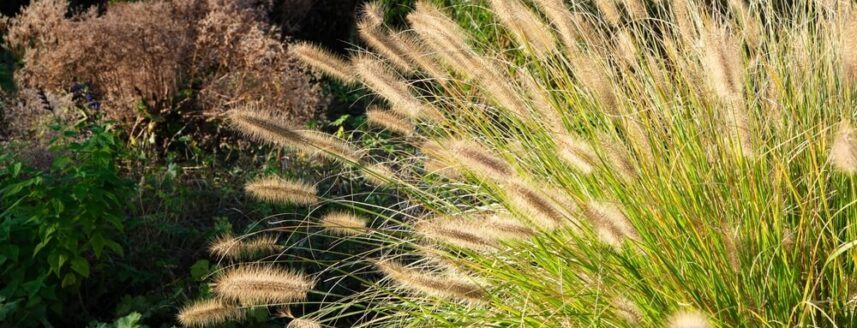
Pruning Ornamental Grasses: Why, When & How
Learn the tricks of the trade with ornamental grass pruning. Find out which ornamental grasses to trim and when is the best time to do it.
🌱 All important maintenance moments for your lawn during the year. Leave your email and we will send you the lawn calendar for free.
Enter your email
Receive the lawn calendar in the mail
Enjoy a green lawn all year round!

- Order by 2PM = shipped today
- 250.000+ satisfied customers!
- 60 day satisfaction guarantee
Ornamental grasses are a wonderful addition to any garden. They provide structure and colour and give your garden a natural look. They require relatively little maintenance, but trimming ornamental grasses is essential to keep it beautiful and healthy.
- Why prune ornamental grass?
- When to cut back ornamental grass?
- Ornamental grasses species
- Ornamental grass that you need to prune
- Ornamental grass that you shouldn’t prune
- Pruning evergreen ornamental grasses
- FAQ’s about trimming ornamental grass
- Pruning ornamental grasses is worth it
We’ll explain why and when to prune ornamental grasses and how. We will also discuss the types of ornamental grass and which ones you don’t need to prune. Sit back and find out all about it!
Why prune ornamental grass?
Pruning ornamental grasses is recommended for several reasons. First, pruning ensures that the blades of grass remain healthy. By removing old and damaged culms, you give new shoots space and promote nice density and compact growth.
In addition, pruning improves the overall look of your garden. By removing dead and less beautiful parts and shortening the culms, your ornamental grass will get a well-groomed and lush appearance.
What happens if you don’t cut back ornamental grasses? Well, they will look wild and spread their seeds. Afterwards, you might end up with ornamental grass in areas you do not want them. Moreover, during the next spring, new grass might not make it through the thick foliage.
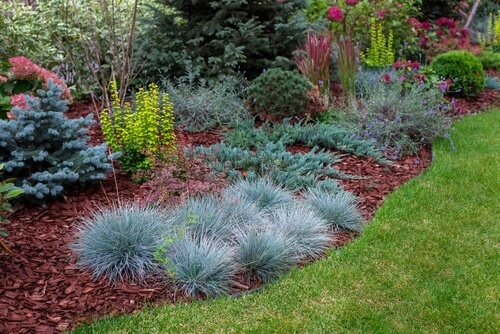
When to cut back ornamental grass?
In principle, you should prune ornamental grass once a year. The right time to prune ornamental grasses can vary depending on the type of plants you have.
It is recommended to prune ornamental grasses in early spring (immediately after the last frost), before new growth begins. This means that you can deeply prune back all ornamental grasses that die back above ground in winter at the end of February or beginning of March.
Early sprouting species (such as bentgrass and feather grass) should be pruned in February. A handy rule of thumb: if you discover the first new shoots between the old stems, it’s time for a pruning.
Cutting ornamental grasses before the winter is not such a good idea for most species. Pruning after winter, on the other hand, ensures that the grass blades retain their structure throughout the winter and that the grasses are protected from frost damage. Ornamental grass also provides shelter for animals, so pruning your ornamental grass in the spring benefits biodiversity.
There are, of course, exceptions. Some ornamental grasses can be pruned in the fall, depending on their growth cycle. If you want to know when to cut back ornamental grasses, you need to understand the specific needs of each type of ornamental grass before you start pruning. That is why we will first briefly discuss the types of ornamental grass.
Ornamental grasses species
There are up to 8000 varieties of ornamental grasses, ranging from colourful to green and from low-growing ground covers to medium and tall grasses (some with panicles) that add a dramatic touch to your garden.
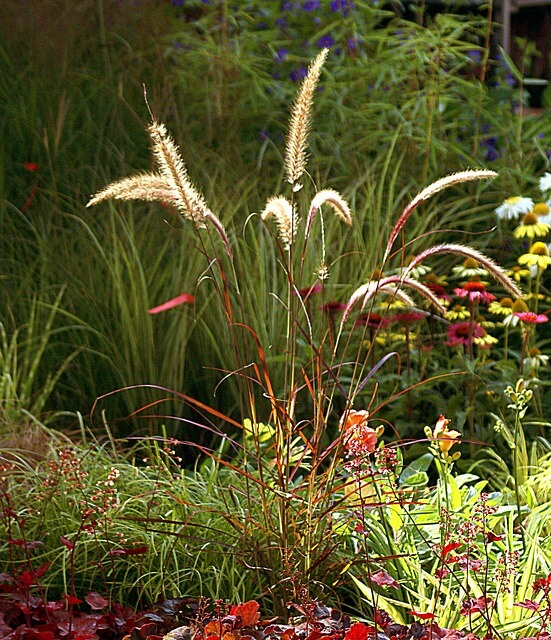
Some popular types of ornamental grasses include:
- Pampas grass (cortaderia selloana): this imposing grass can grow up to 2 meters tall and has a fluffy inflorescence. Pampas grass should be pruned in early spring, shortening the culms to 12 inches (ca. 30 cm) above the ground.
- Lampshine grass (pennisetum alopecuroides): this ornamental grass has beautiful plumes that resemble lampshiners.
- Japanese sedge (Carex morrowii): This variety has narrow, green leaves and thrives in the shade. Pruning Japanese sedge isn’t strictly necessary, but you can remove the old leaves in early spring for a neater look.
The best way to prune ornamental grass differs per species. We will now have a closer look at this.
Ornamental grass that you need to prune
Not all ornamental grasses need pruning, but most, especially the deciduous varieties, benefit from annual pruning. If the foliage of your ornamental grass turns brown in the winter, this is a sign that you can put pruning your ornamental grass on your to-do list for the spring. Some kinds that need to be pruned are:
- Beautiful reed (Miscanthus): This ornamental grass has elegant flower spikes and dies back completely in the autumn. Leave the old culms until spring. Reed is known for its rapid growth. Pruning back every year is therefore recommended.
- Molinia caerulea: this ornamental grass has beautiful flower spikes and should be pruned in the spring. Cut the culms to about 4 inches (ca. 10 cm) above the ground.
- Ostrich reed (calama-festis): this type of grass can be cut back strongly up to 4 to 8 inches (ca 10 to 20 cm) above the ground). Preferably, do this in February before the new growth starts.
- Lampshade grass (pennisetum alopecuroides): pruning lampshade grass is easy: cut the culms to about 4 inches (ca. 10 cm) above the ground in early spring.
Pruning deciduous (summer green) ornamental grasses helps to keep them healthy and attractive.
Ornamental grass that you shouldn’t prune
Although some ornamental grasses benefit from pruning, there are also species that should not be pruned. These retain their shape and structure best when they are not pruned. Some ornamental grasses that should not be pruned are:
- Feather grass (Stipa): This ornamental grass has beautiful, soft plumes and holds its shape best when not pruned. Leave the old culms for a natural look. To preserve the most beautiful foliage, you can cut back feather grass in early spring.
- Reed grass (Calamagrostis): This ornamental grass has upright culms and does not need to be pruned. Leave the culms until spring, before the new growth begins.
Pruning evergreen ornamental grasses
Some ornamental grasses, especially the evergreen or semi-evergreen, require little to no pruning. Examples of evergreen ornamental grasses are Sedge (Carex), bluegrass or sheep grass (Festuca) and Meadow rush (Luzula). With these species, it is sufficient to only remove the damaged or dead leaves to keep the plant tidy.
How do you prune ornamental grass?
Now that you understand why pruning ornamental grasses is significant and when to trim ornamental grasses, it’s time to learn how to prune them. Follow this step-by-step guide for best results:
- Start by removing dead, damaged, or diseased culms. Cut these culms as close to the ground as possible.
- Cut the remaining culms to the desired height. Depending on the type of ornamental grass, you can choose to cut the culms down to the ground or keep some of them.
- Comb or pluck the remaining bunches to make the ornamental grass airy and shake off dead plant debris. This creates space and light for new shoots and prevents the ornamental grass from rotting.
- Remove all pruning waste and clean the area around the ornamental grasses.
- If you like, you can give your ornamental grass a little extra care after pruning. After pruning, improve the soil with some compost or a suitable lawn fertiliser.
If you are going to prune long ornamental grass, it is smart to make some space first so that you can easily reach the core. You can now hold the grass with one hand and trim it with the other.
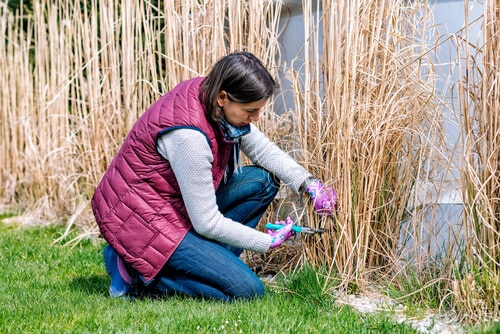
Tools needed for ornamental grass pruning
To properly prune ornamental grasses, it’s important to have the right tools on hand. Here are some tools that can are helpful when pruning ornamental grasses:
- Pruning shears: sharp pruning shears are essential for precise pruning. Make sure the pruning shears are clean and sharp for optimal cutting results.
- Hedge trimmer: A hedge trimmer can be useful for pruning large amounts of ornamental grass. Make sure the hedge trimmer blades are sharp for a neat cut.
- Gloves: Wearing gloves can protect your hands from any sharp tips.
- Safety goggles: if you are going to cut medium-or high grass, wearing safety goggles is recommended.
As always, make sure your tools are clean and sharp. This way you work most pleasantly and reduce the risk of diseases.
Common mistakes
Pruning ornamental grasses isn’t too complicated, but there are some things to look out for. Here are some common mistakes to avoid when pruning ornamental grasses:
- Wrong timing: Pruning at the wrong time can lead to damage to new growth. If you prune before winter, you will lose the benefits of winter (not pruning will provide protection for the plant). In addition, many ornamental grasses are at their best in autumn and winter. Make sure you know the right time to prune your specific plants.
- Over-pruning: Excessive pruning can harm the health of the ornamental grasses and hinder their growth. So be careful with rigorous pruning. Although it is normal, that after cutting your ornamental grass, you are left with a somewhat less flattering bush. Don’t worry: ornamental grass grows very fast, especially if you prune it.
- Improper tools: Using blunt or wrong tools can damage the ornamental grasses and leave a sloppy cut. Make sure you’re using the right tools and that they’re in good working order.
By avoiding these mistakes and doing it carefully, you will achieve the best results when pruning ornamental grasses.
FAQ’s about trimming ornamental grass
Most ornamental grasses can be cut to about 4 to 10 inches (ca. 10 to 25 cm) above the ground in early spring.
For most types of ornamental grass, early spring (late February, early March) is the best time to prune. Early sprouting varieties are best pruned in February. A general rule of thumb: don’t prune until the last frost has passed and (at the latest) as soon as you see the first new, green shoots appear.
Pruning ornamental grasses is worth it
Pruning your ornamental grass annually is an important gardening job that supports the health, beauty, and longevity of these beautiful garden plants. If you apply the right techniques at the right time, your grass will shine every season. Make sure you understand the specific needs of the type you have and use the right pruning tools for the best results.
Happy gardening!
-
Orchids: A Complete Guide on How to Care for ThemWant to give your orchid the best possible care? Discover essential tips from placement to watering and pruning. Learn everything you need to know!Read more
-
Growing Wisteria Made Simple: From Planting to Perfect BloomsWith blossoms like a purple waterfall, Wisteria sets an almost magical and colourful mood. If you want to grow this beauty in your garden, you’ll need a bit of patience. Don’t worry, it will most definitely pay off.Read more
-
How to Build a DIY Greenhouse: A Practical Guide for Smart SpendersImagine extending your growing season throughout the year, nurturing tender plants regardless of the weather, and creating a personal garden sanctuary. This is precisely what a DIY greenhouse offers you. Let’s learn how to build one.Read more
-
How to Grow Eucalyptus in British GardensWith a little love and care, eucalyptus trees can thrive in English gardens. Since they don’t germinate well without proper help, there are not considered invasive. So, there is no reason not to plant them if you enjoy their looks.Read more
-
Transform Your Garden with All-Year-Round Flowering PlantsDid you know you can enjoy blooming flowers even in January? With the right selection of all year round plants, there’s no need to wait until spring to add some colour to your garden.Read more
-
How to Create a Butterfly Garden: A Simple Guide for British GardensThe UK's butterfly population includes 59 different species. These beautiful winged creatures face a steady decline because of habitat loss, pollution and changing weather patterns. Your garden can become a vital link between nature reserves and natural habitats. Let’s explore how.Read more
-
Volcanic Rock Dust for Your Garden—Application and TipsDid you know that volcanic rock dust is a brilliant organic soil improver? This article explains exactly what it's good for and how to use it properly.Read more
-
How to Use Landscape Fabric ProperlyIf weeds or erosion in your garden are troubling you, landscape fabric might be the solution. We’ll explain how and when to use it properly, just keep on reading.Read more
Leave a comment
Your answer will be displayed on the site and the interested party will be notified by email.
Leave a comment
Have a question or want to share your experience? Leave us a comment.

- Order by 2PM = shipped today
- 250.000+ satisfied customers!
- 60 day satisfaction guarantee

- Order by 2PM = shipped today
- 250.000+ satisfied customers!
- 60 day satisfaction guarantee

🌱 All important maintenance moments for your lawn during the year. Leave your email and we will send you the lawn calendar for free.
Enter your email
Receive the lawn calendar in the mail
Enjoy a green lawn all year round!


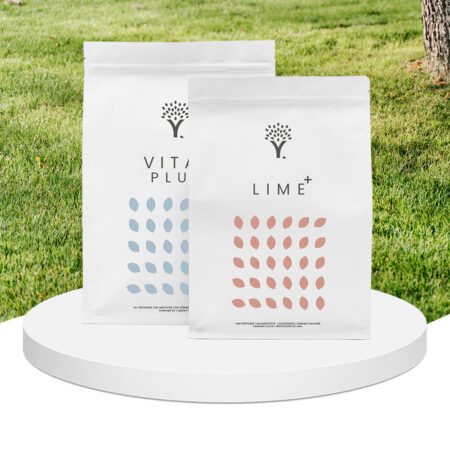


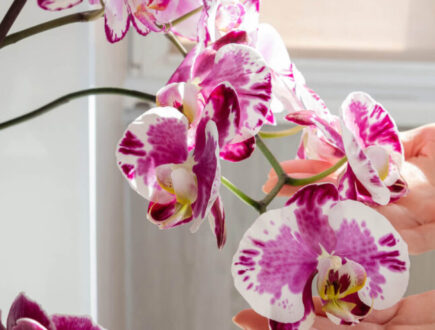
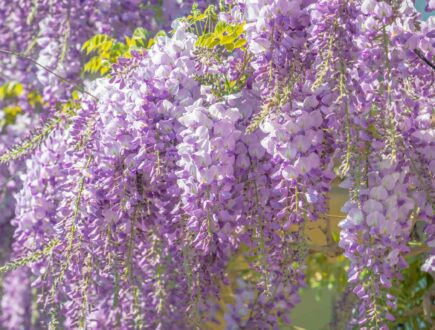








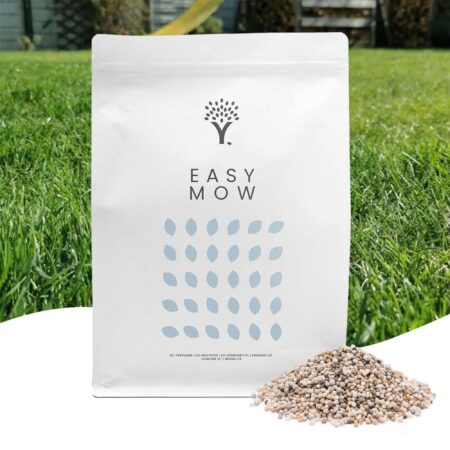
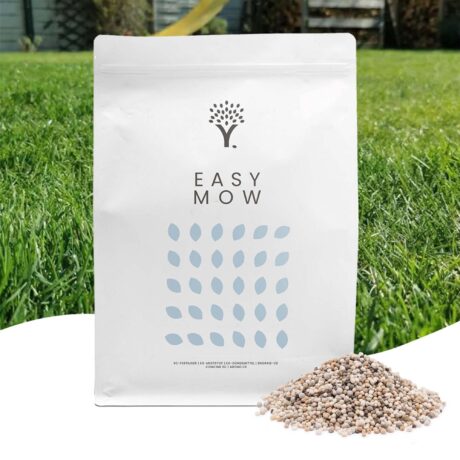





Comments (0)
There are no comments yet. Well then, what are you waiting for to
Be the first to write your comment!inaugurate this pretty page?
Do you have some comments?